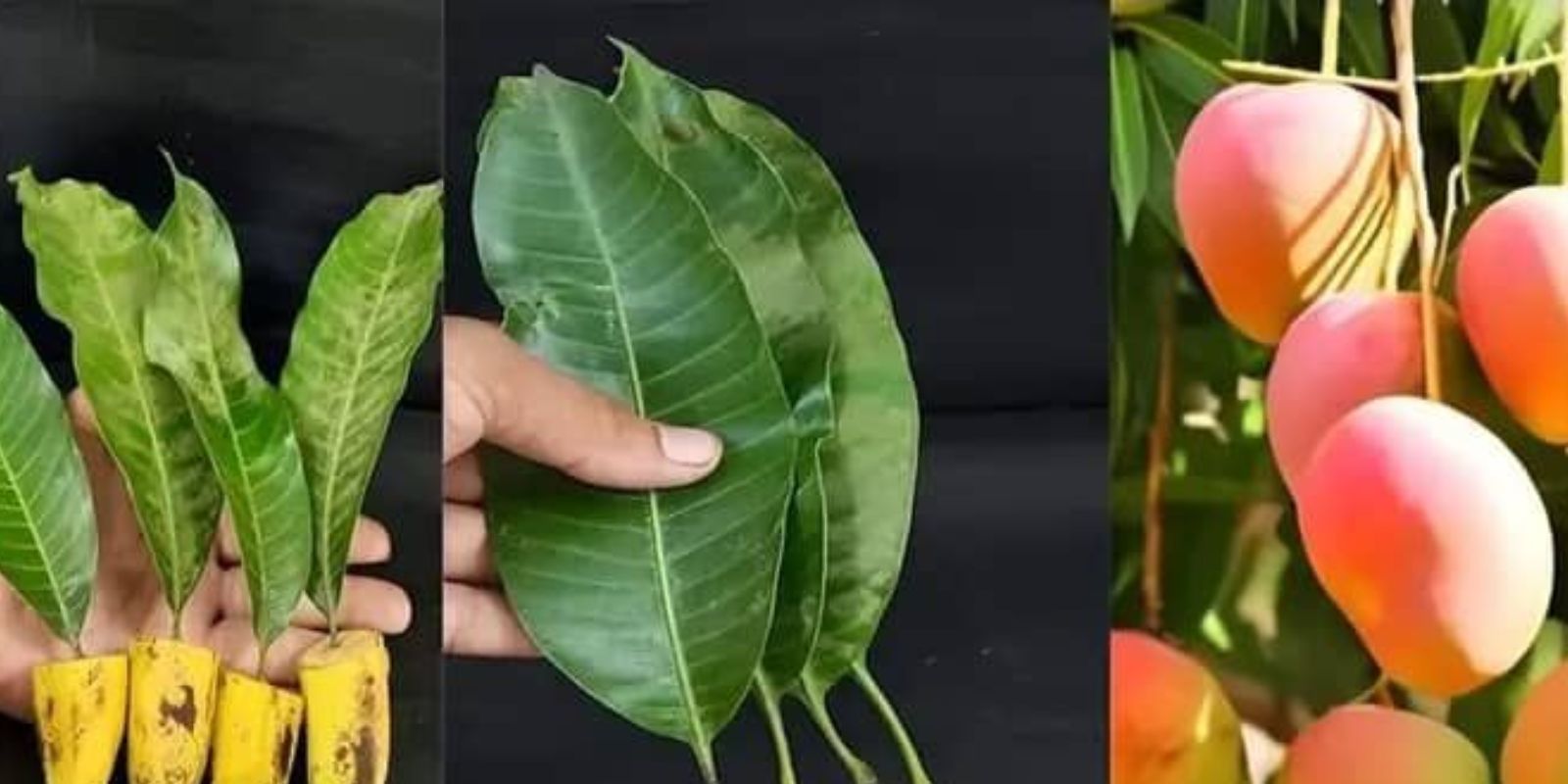Imagine growing a mango tree from a simple mango leaf. Sounds like a dream, doesn’t it? Well, it’s possible with a unique and innovative technique that leverages the natural properties of banana trees to aid in rooting. This method is not only fascinating but also an excellent way to start your mango-growing journey with minimal investment. Here’s a comprehensive guide to growing mango trees from leaves using the banana rooting method.
Introduction
Mangoes, known for their sweet and juicy fruit, are a delight in any garden. However, starting a mango tree from seed can be a long process, and not everyone has the patience for it. Fortunately, there’s a more expedited method involving the use of banana trees to help mango leaves develop roots. This technique combines traditional plant propagation with a touch of creativity, making it an exciting project for both seasoned gardeners and beginners.
Step-by-Step Guide to Growing Mango Trees from Leaves Using Banana Tree Rooting Technique
1. Select Healthy Mango Leaves
The first step in this process is selecting the right mango leaves. To ensure success, choose young, healthy leaves that are vibrant green and free from pests or diseases. The quality of the leaves you use will directly affect the rooting and growth of your mango tree. Avoid using older leaves or those showing signs of damage.
2. Prepare the Mango Leaves
Once you have selected the leaves, prepare them for the rooting process. Use clean, sharp scissors or pruning shears to cut the leaves with a small segment of the stem still attached. The stem, approximately 4-6 inches long, plays a crucial role in helping the leaf absorb water and nutrients. Trim any excess or damaged parts of the leaf to ensure the best chance of successful rooting.
3. Prepare the Banana Tree
The banana tree plays a pivotal role in this method by providing the necessary nutrients and moisture for the mango leaves to root. Cut a section of the banana stem that is 2-3 inches long or use pieces of banana peel. The banana provides a rich source of nutrients and moisture, which will aid in the rooting process.
- Create Slits or Holes: In the banana section, make small slits or holes. These will serve as the insertion points for the mango leaves. The slits should be just large enough to hold the mango leaves securely but not so large that they fall out.
4. Insert the Mango Leaves
With the banana prepared, it’s time to insert the mango leaves. Gently place the cut end of each mango leaf into the slits or holes in the banana section. Ensure that the leaves are snugly fit to provide stability and maximize the chance of successful rooting. The banana section should now have several mango leaves inserted.
5. Plant the Banana and Mango Combination
Now that you’ve prepared the banana and mango combination, it’s time to plant it.
- Fill Pots with Well-Draining Soil: Choose pots with good drainage to avoid waterlogging. Fill the pots with a mix of well-draining soil, such as a combination of potting soil and sand.
- Place the Combination in Soil: Make small holes in the soil and bury the banana section with the inserted mango leaves. The banana section should be completely covered by soil, with only the mango leaves exposed.
6. Create a Humid Environment
Mango leaves require a humid environment to develop roots successfully.
- Water Thoroughly: Water the soil thoroughly to ensure it is evenly moist. Avoid overwatering, as this can lead to root rot.
- Cover with Plastic: To create a mini greenhouse effect, cover the pots with plastic bags or plastic bottles with ventilation holes. This helps to maintain humidity around the mango leaves, promoting root development.
7. Place in Indirect Sunlight
Mango leaves need light but not direct sunlight, which can be too harsh. Place the pots in a location where they receive bright, indirect sunlight. This ensures that the leaves get enough light for photosynthesis without being exposed to excessive heat.
8. Monitor and Maintain
Regular monitoring and maintenance are essential for successful rooting.
- Keep Soil Moist: Check the soil moisture regularly and keep it consistently damp but not soggy.
- Watch for New Growth: Look for signs of new growth, which indicates that the roots are developing and the mango leaves are starting to establish themselves.
9. Transplanting
Once you see healthy roots and new growth, it’s time to transplant your young mango trees.
- Prepare for Transplanting: Choose larger pots or a suitable spot in the garden with well-draining soil. Mango trees need plenty of space to grow.
- Transplant Carefully: Gently remove the young mango trees from the pots and transplant them into their new homes. Ensure that the roots are well-established and the trees are securely planted.
Conclusion
Growing mango trees from leaves using the banana rooting technique is an exciting and innovative way to start your mango-growing adventure. By leveraging the natural properties of banana trees, you can successfully propagate mango leaves and watch them grow into lush, fruitful trees. This method not only saves time but also provides a creative way to expand your garden. With a little patience and care, you’ll be enjoying the sweet taste of homegrown mangoes in no time. 🌱🍃🍋
So, gather your materials, follow these steps, and embark on a journey of mango cultivation like never before. Your garden—and your taste buds—will thank you!

